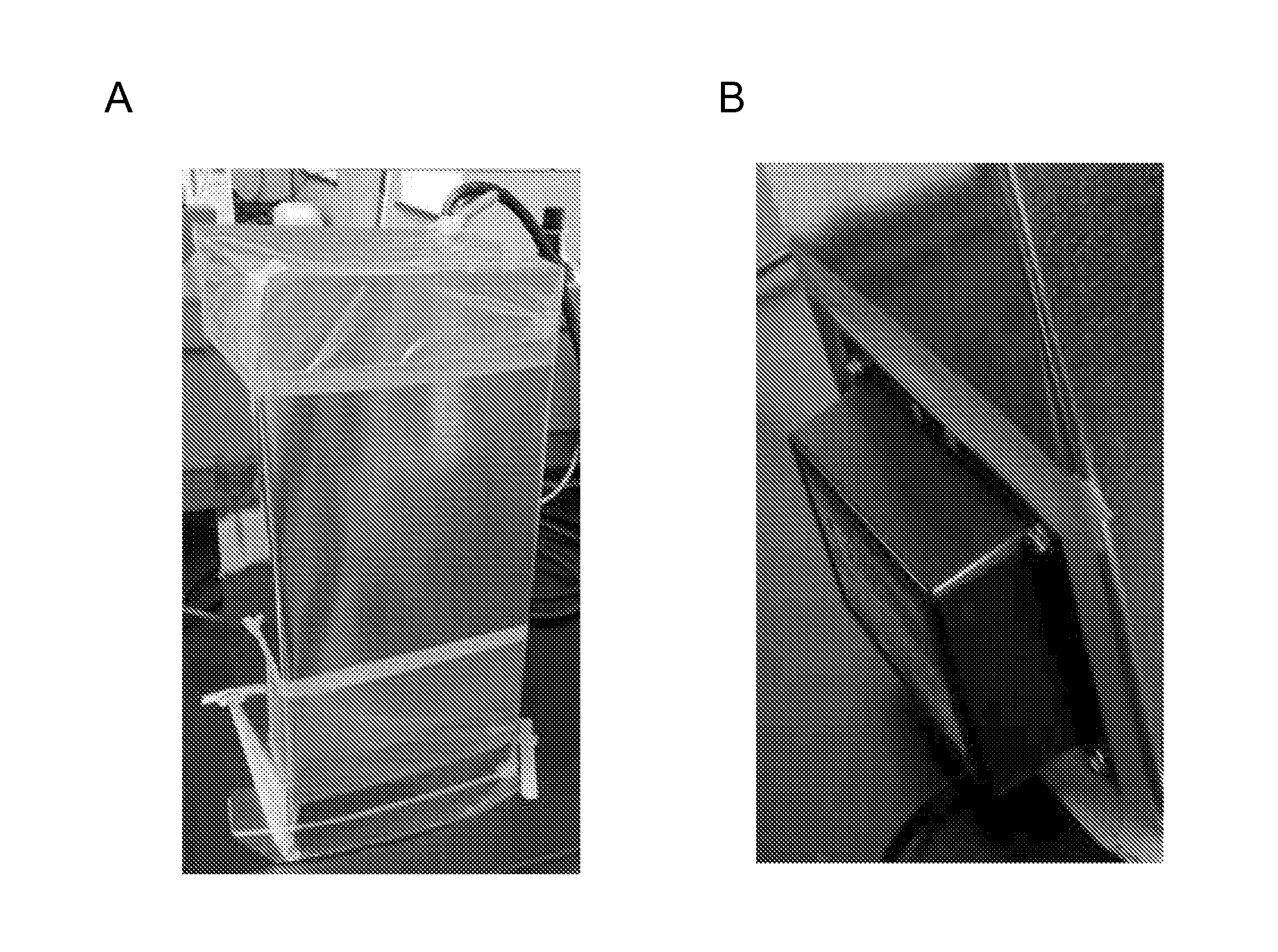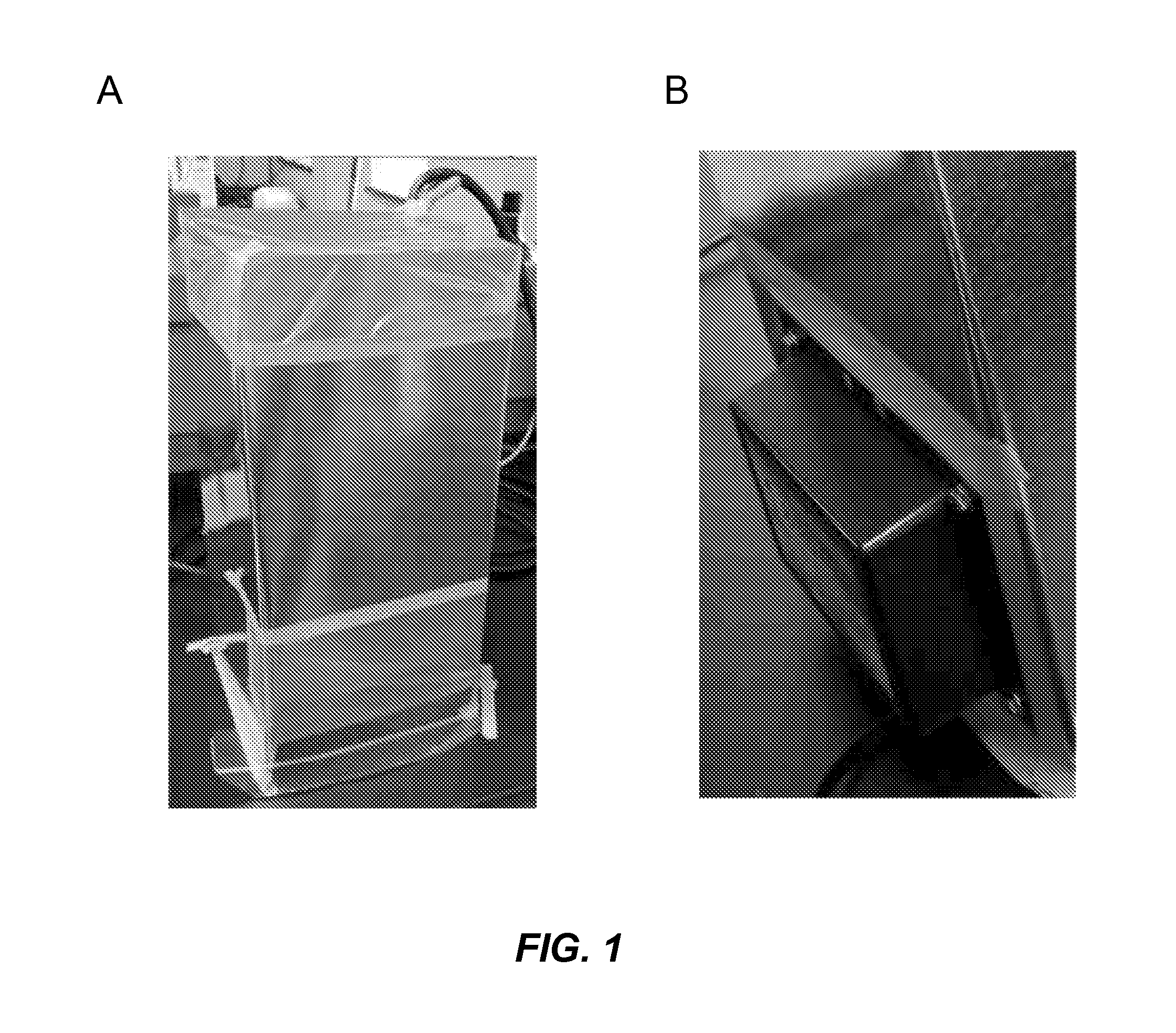Polymer coating compositions and coated products
a technology of polymer coating and composition, applied in the field of polymer coating composition and coated products, can solve the problems of poor adhesion to the surface of medical devices, many drawbacks of coatings, and many of these coated medical devices, so as to reduce pain, reduce or prevent infection
- Summary
- Abstract
- Description
- Claims
- Application Information
AI Technical Summary
Benefits of technology
Problems solved by technology
Method used
Image
Examples
example 1
Compounds
Synthesis of Formula XI:
[0235]
[0236]The following were mixed together and then heated at 50° C. for 6 hours: 150 g Diphenic acid, 506 g Thionyl Chloride, 0.5 g Dimethylformamide. The mixture was allowed to cool at room temperature for 12 hours. The thionyl chloride was then roto-evaporated at reduced pressure at 80° C. When thionyl chloride had fully evaporated, the liquid was allowed to reach room temperature. 275 g of methylene chloride was added and all solids were dissolved. Then, the following was added slowly: 120 g Methylene chloride, 118 g pyridine (in the 120 g methylene chloride), 186 g 2-hydroxyethyl methacrylate. Temperature was held at 45° C. for 3 hours with continual stirring, until the solution became thick with salts. Salts were filtered off and then rinsed with 180 g methylene chloride three times. All of the washes from the salts were combined with the first filtrate into a separatory funnel. 1 L of 0.1M HCl in water was then admixed with the mixture. Whe...
example 2
Testing of Various Coating Compositions
[0237]Various formulations for preparing a polymerized coating comprising a homopolymer of a compound of Formula XI were tested. The effects of monomer weight percentage in casting solution, allowing acetone to evaporate prior to curing, and increasing the power of the energy source were studied. For the purposes of the experiments described below, “DMC” refers to a compound of Formula XI:
Methods
[0238]Four DMC coatings were polymerized on 6 mm straight Impra vascular grafts. DMC coatings consisted of DMC monomer in acetone at either 10% or 20% by wt / wt. The photoinitiator Irgacure 2959 (BASF; Ludwigshafen, Germany) was added to the monomer casting solution at 1 wt % of the monomer solution used. 1 cm terminal ends of grafts were coated using ¼″ glass rods and 100 μl of monomer / solvent / initiator casting solution. Curing was conducted immediately after casting or after approximately two minutes of passing air across the graft, still positioned on...
example 3
Testing of Compositions Comprising a DMC Compound
[0243]Pure DMC homopolymers or copolymers comprising a 1:1 weight ratio of a DMC compound:methyl methacrylate were created and tested. Monomer solutions at either 10 wt % or 20 wt % DMC were polymerized using acetone, dichloromethane, toluene, xylenes, tetrahydrofuran, and ethyl acetate as solvents, independently. Irgacure-2959® (2-hydroxy-1-[4-(2-hydroxyethoxyl)phenyl]-2-methyl-1-propanone) was used as the photoinitiator. Irgacure-2959® was added to the monomer / solvent systems at 0.1, 0.5, and 1 wt %. A Rocket LP energy source was used to activate the photoinitiator.
[0244]Table 2 below depicts selected DMC formulations, substrates for coating, and curing conditions tested in this experiment.
TABLE 2Summary of DMC formulationsFormulation ID12345DMC wt %202010105MMA wt %00005Solventacetoneacetonedichloro-acetoneacetonemethaneIrgacure0.10.5111wt %Rocket280-480280-480280-400280-400280-400Filter(nm)OutputNANA7.17.210.4Energy(W)1Distance225...
PUM
| Property | Measurement | Unit |
|---|---|---|
| wavelengths | aaaaa | aaaaa |
| thickness | aaaaa | aaaaa |
| thickness | aaaaa | aaaaa |
Abstract
Description
Claims
Application Information
 Login to View More
Login to View More - R&D
- Intellectual Property
- Life Sciences
- Materials
- Tech Scout
- Unparalleled Data Quality
- Higher Quality Content
- 60% Fewer Hallucinations
Browse by: Latest US Patents, China's latest patents, Technical Efficacy Thesaurus, Application Domain, Technology Topic, Popular Technical Reports.
© 2025 PatSnap. All rights reserved.Legal|Privacy policy|Modern Slavery Act Transparency Statement|Sitemap|About US| Contact US: help@patsnap.com



